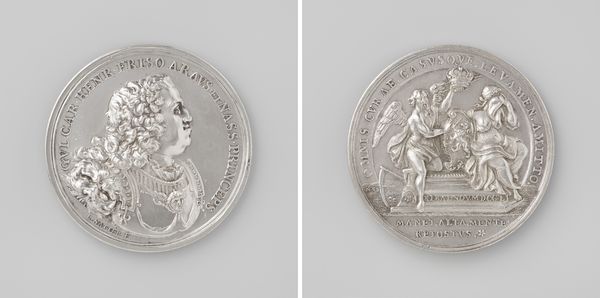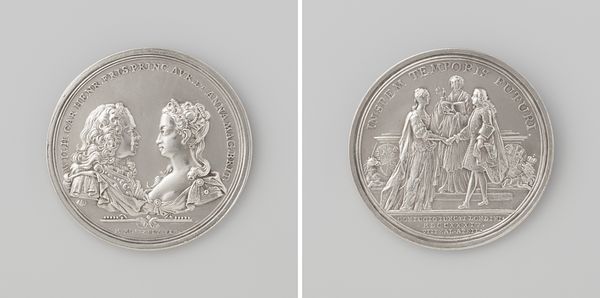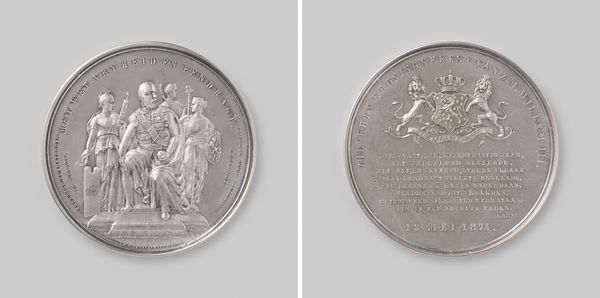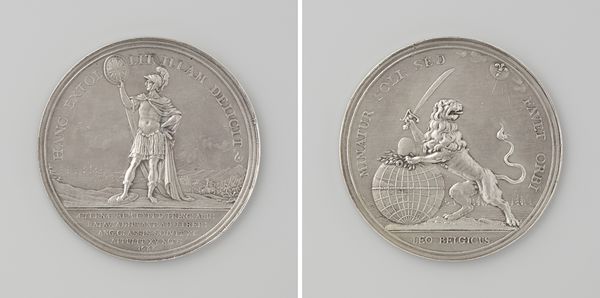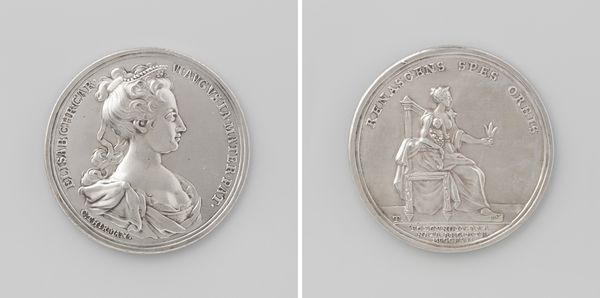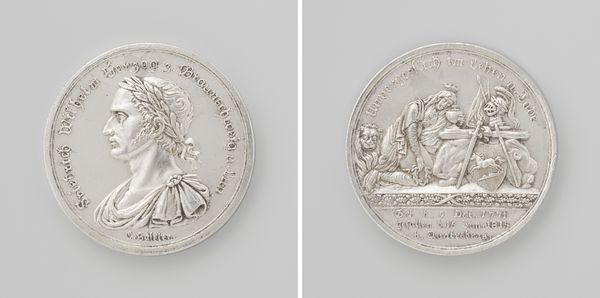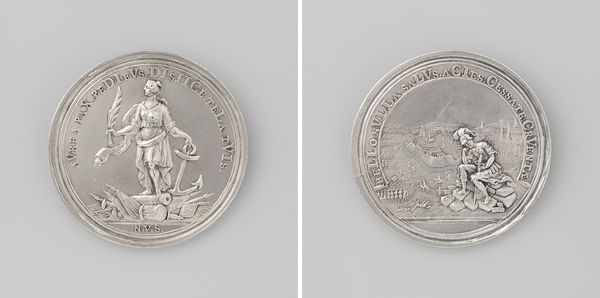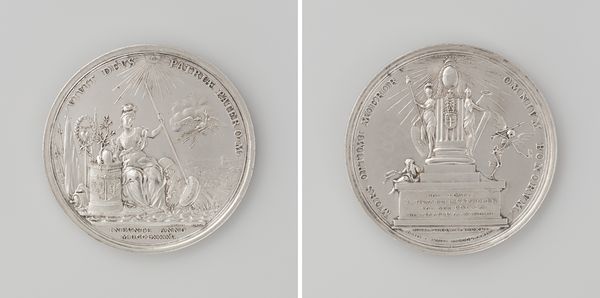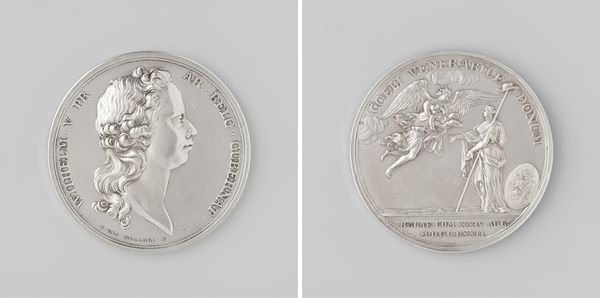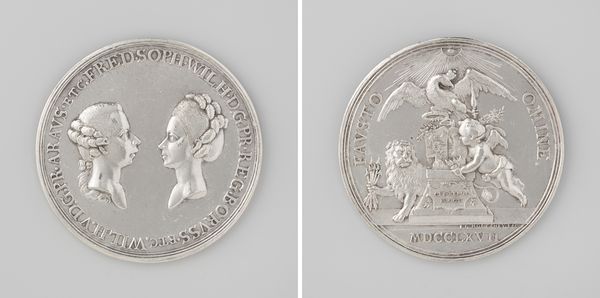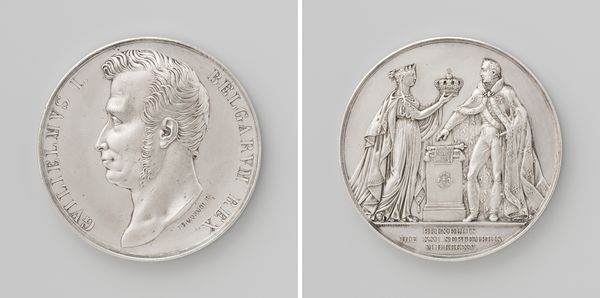
metal, sculpture
#
portrait
#
neoclacissism
#
16_19th-century
#
metal
#
sculpture
#
history-painting
Dimensions: diameter 4.8 cm, weight 372 gr
Copyright: Rijks Museum: Open Domain
Curator: What strikes me is the overall sense of quiet formality, of tradition almost… the monochrome metal adds a sense of solemnity. Editor: Agreed, there's definitely a gravity to it. We’re looking at "Overlijden van Willem II, koning der Nederlanden," or "Death of William II, King of the Netherlands" by Johannes Petrus Schouberg from 1849. It’s a neoclassical sculpture, made of metal. Curator: Right. It's fascinating how commemorative objects like this reflect societal values and power structures. Here, the King’s profile, classical allegories, and the material itself all point towards the establishment trying to exert control and present a certain image of authority. Editor: It’s beautiful, though, isn't it? The contrast between the bust and the figure on the other side… I see loss but also acceptance, a sort of dignified sorrow. Even though death might be chaotic, this piece communicates control and… understanding. Curator: Interesting, because you’re picking up on an intended reading—mourning tinged with resilience—but it also becomes a carefully managed depiction for public consumption, influencing how people remember their leader. Think about the rise of national sentiment at the time. How would such a piece promote the ideals and image of a burgeoning Dutch nation? Editor: I like to imagine it's more than that. The sculptor had a real dialogue with metal. Imagine those quiet hours in the studio with his mallet... Surely, he felt what most artists do – a conversation with the material that gets inscribed as deeply in a piece as the grander pronouncements of power. It goes beyond Neoclassicism. Curator: It does raise interesting points, of course. The scale… it makes you wonder about distribution; how visible or accessible were these sorts of objects to average citizens, and in which public rituals and contexts might they function? Editor: And while those questions buzz away at us, I’m happy just looking. It’s funny… a dead king… a bit of silvery metal... Yet this simple piece still stirs something in us after all these years. Curator: Indeed, the dialogue between intended symbolism and the work’s enduring material presence is perhaps why we’re still discussing it now.
Comments
No comments
Be the first to comment and join the conversation on the ultimate creative platform.


